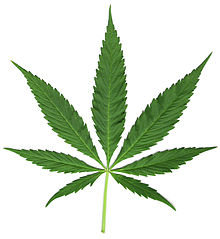Test Your Knowledge On Plants
(236).jpg)
Do you consider yourself a know-it-all when it comes to plants? Do you know how plants collect food and water? Check out our online quiz to test yourself and learn facts.
- 1.
Which part of a plant helps keep the plant in an upright position?
- A.
Leaf
- B.
Flower
- C.
Roots
- D.
Stem
Correct Answer
D. StemExplanation
The stem of a plant helps keep the plant in an upright position. The stem provides structural support and contains specialized tissues that transport water, nutrients, and sugars throughout the plant. It also allows the leaves and flowers to be positioned for optimal sunlight exposure. Without a strong and sturdy stem, the plant would not be able to stand upright and would be more prone to falling over.Rate this question:
-
- 2.
Which part of a plant collects water and nutritions?
- A.
Fruit
- B.
Roots
- C.
Leaves
- D.
Stem
Correct Answer
B. RootsExplanation
Roots are the part of a plant that collects water and nutrients from the soil. They have specialized structures, such as root hairs, that increase the surface area for absorption. The roots also anchor the plant in the ground, providing stability and support. In addition to water and nutrients, roots also store food and carbohydrates for the plant's growth and development.Rate this question:
-
- 3.
Three things that plants need to grow are ________,________, and ________.
Correct Answer
water, sunlight, airExplanation
Plants require water, sunlight, and air to grow. Water is essential for plants as it helps in transporting nutrients and minerals from the soil to different parts of the plant. Sunlight is necessary for photosynthesis, a process through which plants convert sunlight into energy. Air is needed for respiration, allowing plants to take in oxygen and release carbon dioxide. These three elements work together to provide plants with the necessary resources for growth and development.Rate this question:
- 4.
All plants begins life as a ___________
- A.
Flower
- B.
Root
- C.
Leaf
- D.
Seed
Correct Answer
D. SeedExplanation
Plants begin life as seeds, which contain the embryo of the plant. Seeds are the reproductive structures of plants and serve as a means of dispersal. They contain all the necessary nutrients and genetic information to initiate growth and development. Once a seed is planted in the soil and provided with proper conditions such as water, sunlight, and nutrients, it germinates and starts growing into a new plant. Therefore, the correct answer is seed.Rate this question:
-
- 5.
Talking about the plant cycle. What is the second step in the plant cycle is ________, Which is actually a starter of the growth for the plant.
Correct Answer
germinate, germinationExplanation
The second step in the plant cycle is germination. Germination is the process in which a seed begins to grow and develop into a new plant. It is the starter of the growth for the plant, as it involves the seed absorbing water and breaking out of its dormant state, leading to the emergence of a root and shoot system. This step is crucial for the plant's growth and is the beginning of its life cycle.Rate this question:
- 6.
What is that hardcover which is protecting embryo(baby plant) inside a seed?
- A.
Seed shell
- B.
Seed coat
- C.
Seed jacket
- D.
Dried seed
Correct Answer
B. Seed coatExplanation
The hardcover that protects the embryo (baby plant) inside a seed is called the seed coat. The seed coat acts as a protective layer, shielding the delicate embryo from damage, moisture loss, and external threats. It is typically tough and durable, providing a barrier that helps the embryo survive until it is ready to germinate and grow into a new plant.Rate this question:
-
- 7.
Look at the picture and choose the best answer.
- A.
Compound
- B.
Simple
Correct Answer
A. CompoundExplanation
The correct answer is "compound" because the picture shows a combination or mixture of different elements or substances. A compound is formed when two or more elements chemically combine to create a new substance with different properties.Rate this question:
-
- 8.
Looking into a chopped trunk. We can find the ________ of the tree by counting the rings. And the thick rings show us that it was a ________season.
Correct Answer
age, rainyExplanation
By counting the rings in a chopped trunk, we can determine the age of the tree. The thicker rings indicate a rainy season, as trees tend to grow more during periods of abundant water.Rate this question:
- 9.
The process by which a plant breath and make food is ________________.
- A.
Sunlight
- B.
Photosynthesis
- C.
Water
- D.
Chlorophyll
Correct Answer
B. PhotosynthesisExplanation
Photosynthesis is the correct answer because it is the process by which plants use sunlight, water, and chlorophyll to convert carbon dioxide into oxygen and glucose. During this process, plants take in carbon dioxide from the atmosphere through tiny pores in their leaves called stomata, and then use the energy from sunlight to convert it into oxygen and glucose. This process is essential for plants to produce their own food and release oxygen into the atmosphere.Rate this question:
-
Quiz Review Timeline +
Our quizzes are rigorously reviewed, monitored and continuously updated by our expert board to maintain accuracy, relevance, and timeliness.
-
Current Version
-
Nov 16, 2023Quiz Edited by
ProProfs Editorial Team -
Mar 31, 2021Quiz Created by
Themes
 Back to top
Back to top




